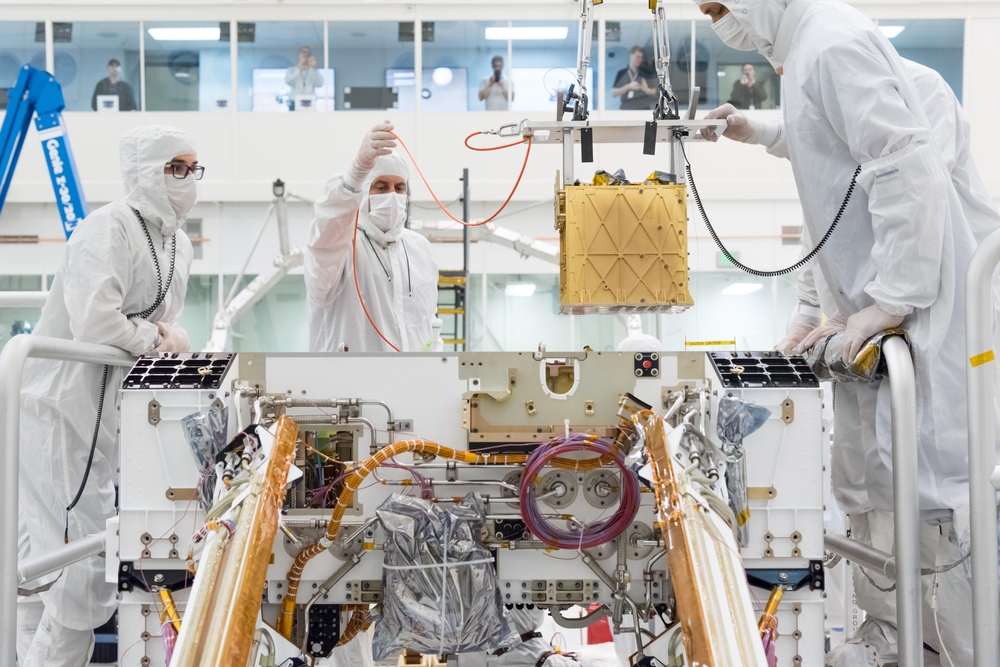Meet the MIT Team Aiming to Make Oxygen on Mars
-
-
Slice of MIT
- 1
In August, MIT alumni got the inside scoop on an MIT research project that began its journey toward Mars on July 30. The Mars Oxygen In-Situ Resource Utilization Experiment (MOXIE), led by a team from the MIT Department of Aeronautics and Astronautics and embedded in NASA’s Mars 2020 Perseverance rover, is designed to demonstrate a way that future explorers might produce oxygen from the Martian atmosphere for propellant and for breathing.

The panelists for the Alumni Association Faculty Forum Online webinar included Michael Hecht SM ’78, director of research at MIT Haystack Laboratory and principal investigator of MOXIE; retired NASA astronaut Jeff Hoffman, who is deputy principal investigator for MOXIE and MIT AeroAstro professor of the practice; and current AeroAstro grad students Maya Nasr ’18, Eric Hinterman SM ’18, and Justine Schultz.
“Mother Nature knows how to make oxygen out of CO2…. Since we cannot bring a rain forest to Mars, what can we do? Can we bring an electronic tree?” says Hecht in this recording of the program. “It turns out, in fact, you can.” That “tree,” as he explains with the help of a scale model, is the car-battery-sized MOXIE, which will collect carbon dioxide from the Martian atmosphere and electrochemically split it into oxygen and carbon monoxide molecules. The oxygen is then analyzed for purity before being vented back out to the Martian atmosphere along with the carbon monoxide and other exhaust products.

The recording also reviews what will happen on both Mars and Earth once MOXIE starts operating on Mars in February 2021, and includes explanations by each graduate student of their part in the work. A Q&A with the alumni audience, moderated by 2019–20 MIT Knight Science Journalism fellow Anil Ananthaswamy, caps off the program.
Watch the video above, then revisit more archived Faculty Forum Online webinars and register for upcoming MIT Alumni Association virtual programming.








Comments
Robert Duncan
Mon, 11/09/2020 12:30pm
Optical Harvesting of Ionic Oxygen (OHIO)
MOXIE sounds like a great approach! I am a physicist who served as the Moore Distinguished Scholar in the Division of Physics, Math, and Astronomy during the 2006 - 2007 academic year at Caltech. During that time we planned and conducted OHIO, which built a testbed to evaluate the use of an electrostatic generator to collect ionic oxygen from the photodissociation of regolith (mainly the CaO component of regolith) during the lunar days. I would be happy to discuss our initial results with MOXIE, if you like.
Best Regards,
Rob Duncan, '82